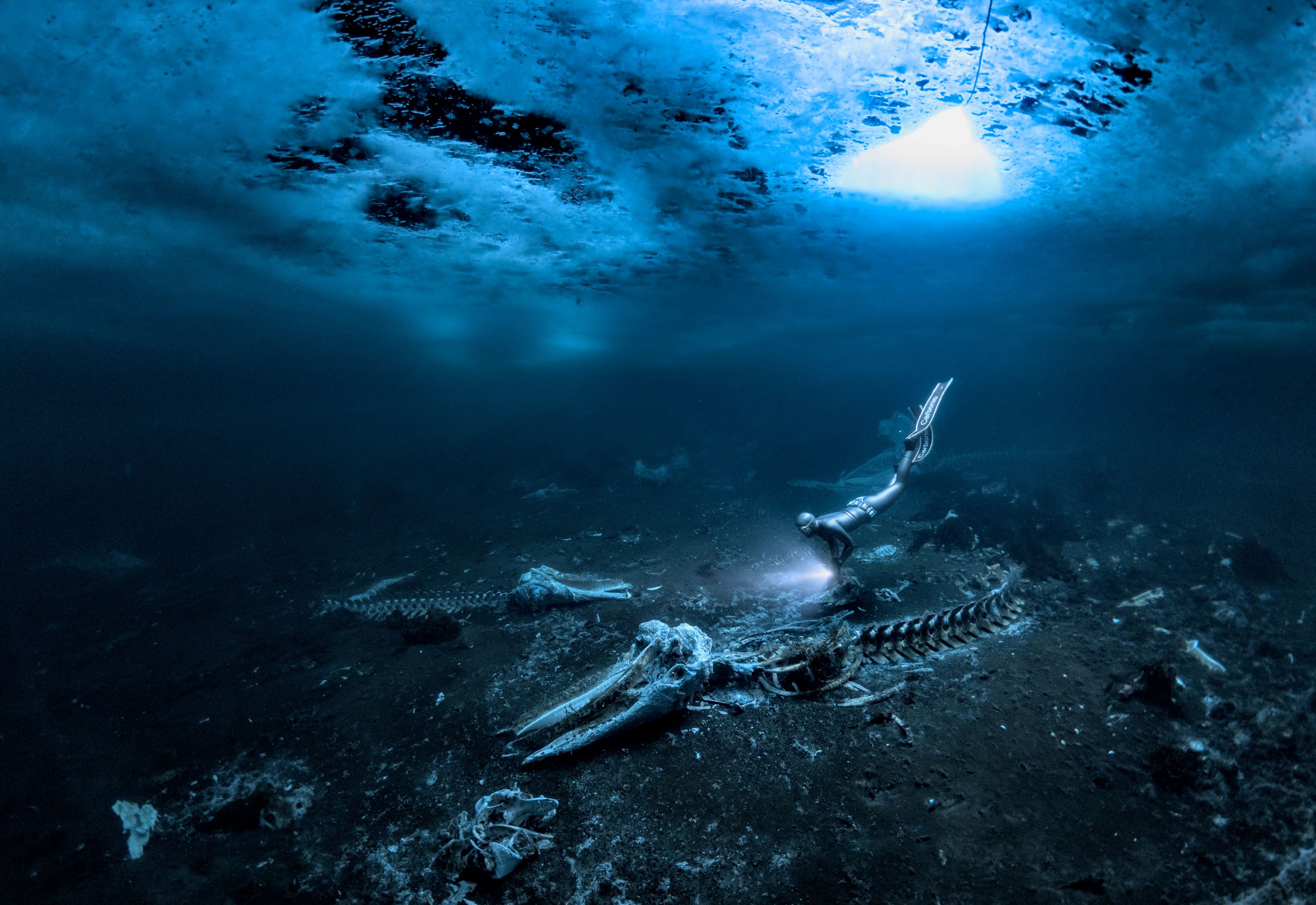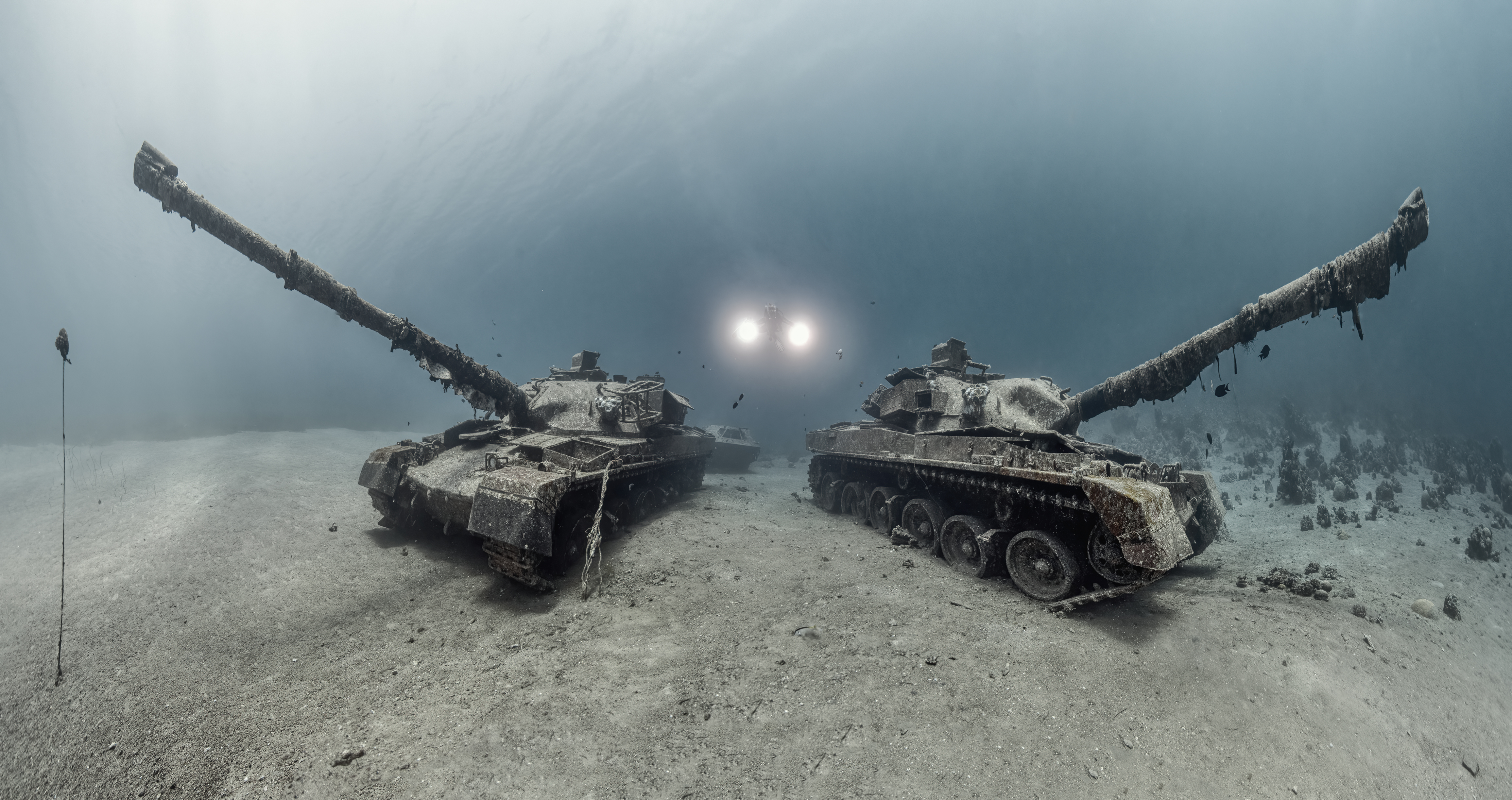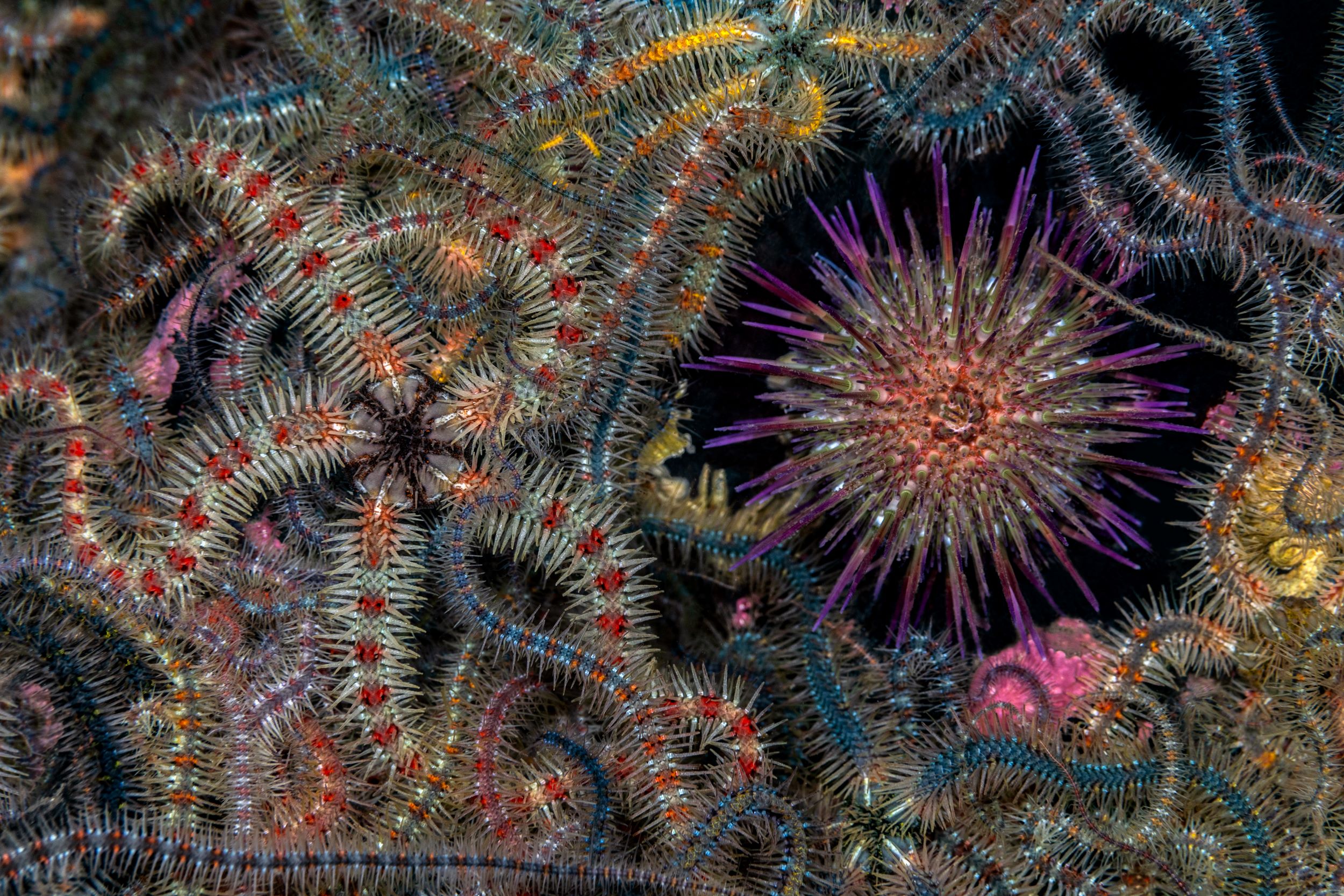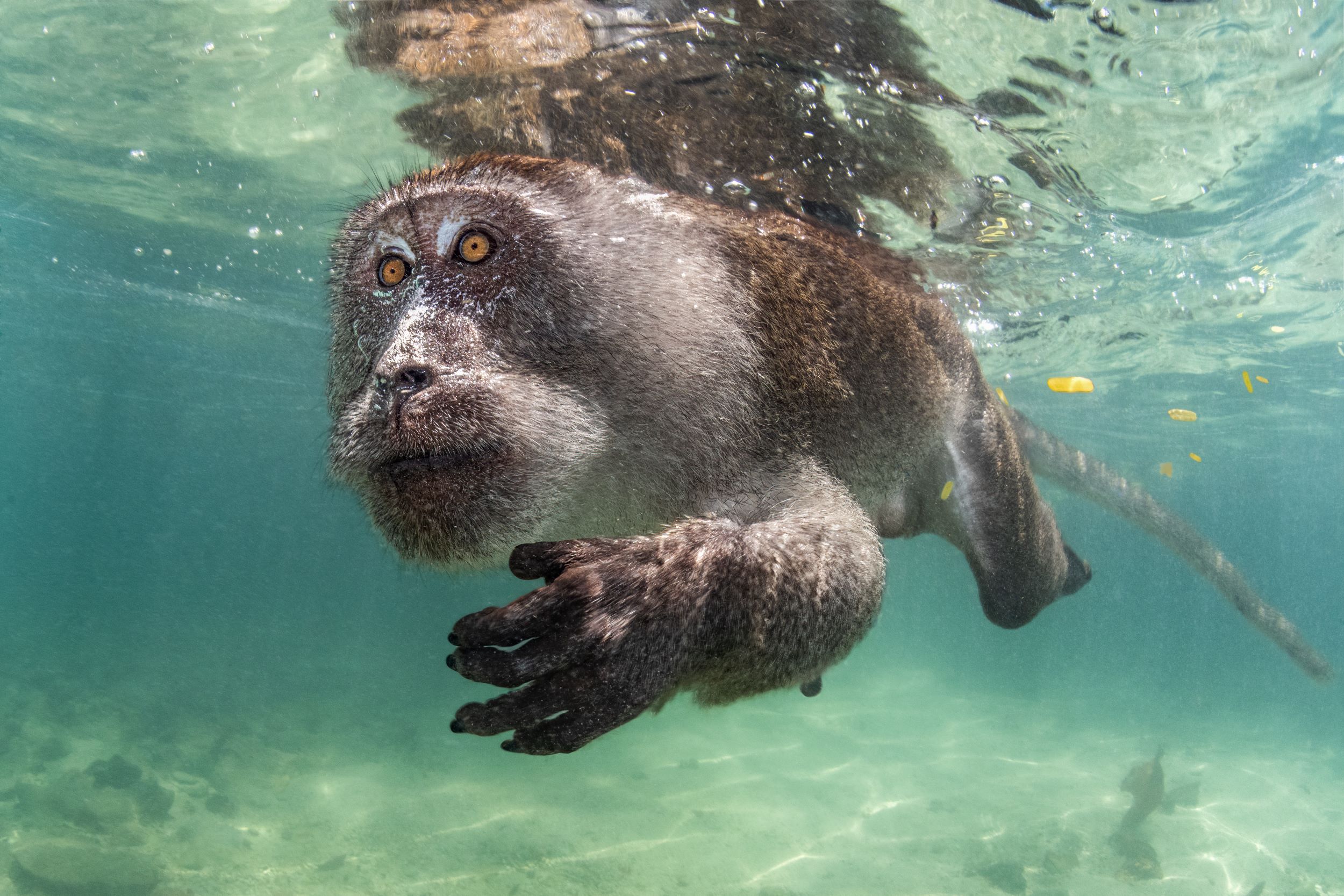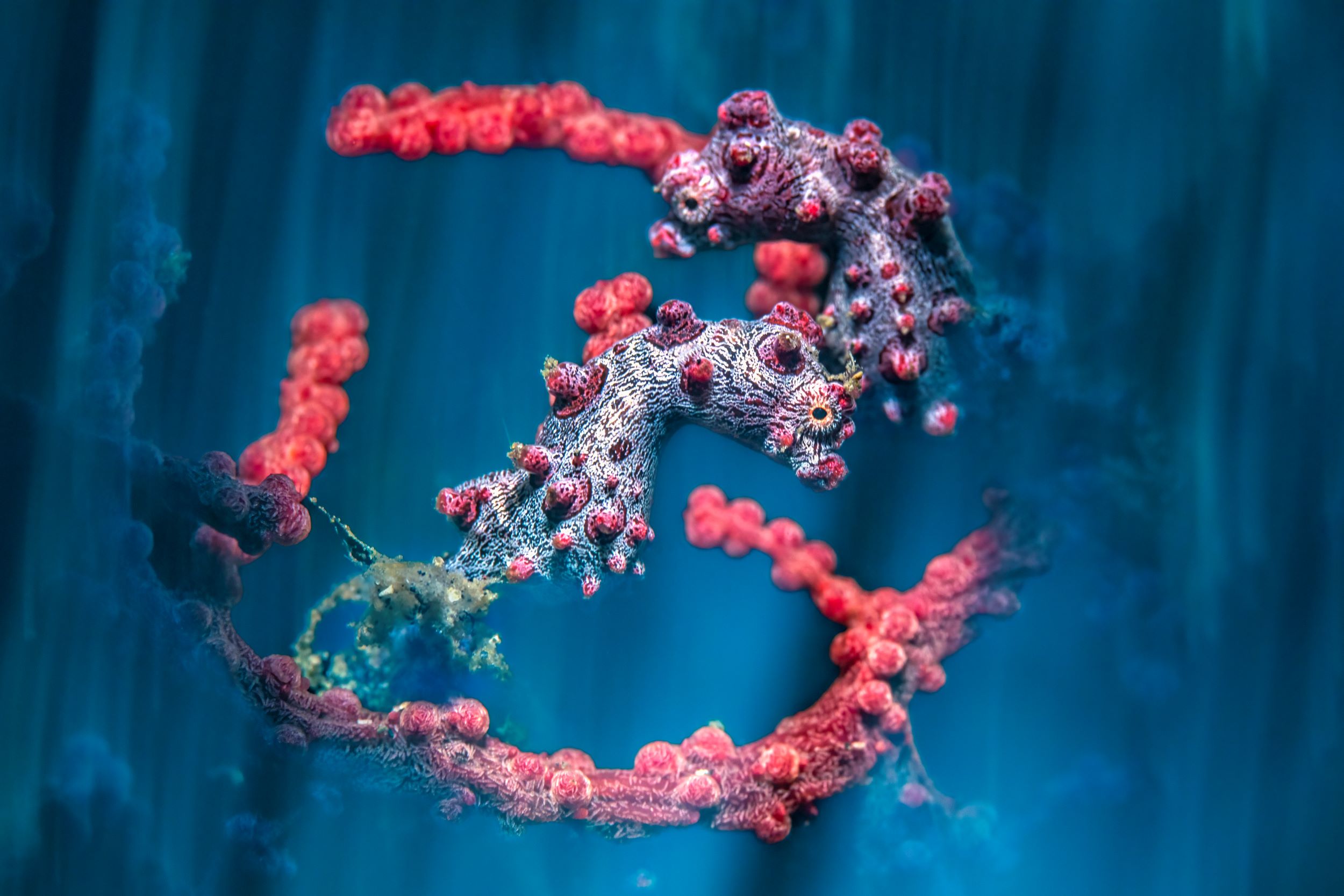Eerie photograph captures whales hunted off Greenland lying in their watery grave
Haunting image showing two whales with their bones picked clean off the coast of Greenland has won the Underwater Photographer of the Year 2024 competition.
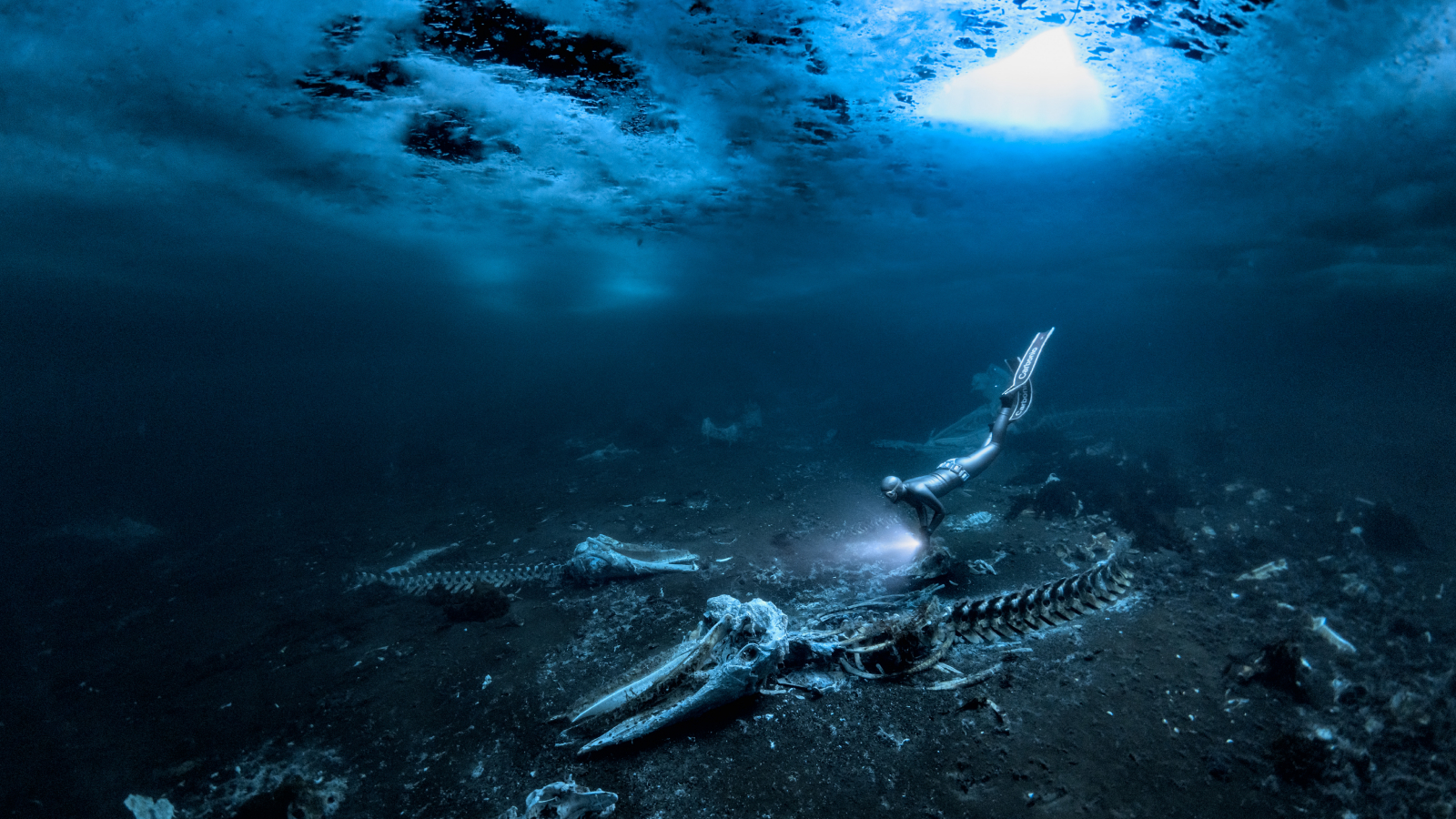
An eerie image captures whale skeletons resting in their watery grave after being killed by hunters off Greenland. The whales had been taken to shore, stripped of the skin, blubber and meat, before being dragged back into the sea. There, they remain in the shallows to be consumed by marine invertebrates.
The photograph, taken by Alex Dawson, has won the Underwater Photographer of the Year 2024 competition after being selected from over 6,500 entries. "Whale Bones," was chosen as the winner because it "invites us to consider our impact on the great creatures of this planet," panel chair Alex Mustard said in a statement emailed to Live Science.
"A very arresting image right from the start; for me this got bigger and better with every viewing," Mustard said. "The diver’s suit and torch give it a 'visiting alien' feel, the composition flows effortlessly and takes your eye on the right journey to tell the story."
Dawson, from Sweden, took the photograph off Tasiilaq in Greenland, a town with a population of around 2,000 people that sits on the coast of the North Atlantic, roughly 66 miles (106 kilometers) south of the Arctic Circle. In the image, a freediver approaches one of two whale skeletons from above, with a gap in the ice above and a flashlight illuminating the bones.
Related: Polar bear sleeping on tiny iceberg drifting in Arctic sea captured in heartbreaking photo
Minke whales are the smallest of the baleen whales — species that feed by sieving plankton through plates in their mouths. Common minke whales (Balaenoptera acutorostrata) are listed as of least concern by the International Union for Conservation of Nature Red List. Because of their size, they were generally considered too fast and small by the commercial whaling industry, and were only hunted when the numbers of other, larger species were depleted. The industry largely ended in the 1980s, however some minke populations are still killed as part of annual hunts. In east Greenland, an average of nine minke whales are killed each year.
"In eastern Greenland the local hunters bring their catch and share it among each other," Dawson said in the statement. "From a stable population of over 100,000 minke whales in the North Atlantic the hunters of Tasiilaq typically take less than a dozen." Dawson said families from the town gather at low tide to cut off the skin, blubber and meat.
Get the world’s most fascinating discoveries delivered straight to your inbox.
"Almost all the whale is consumed, however the skeleton is pulled back into the sea by the next high tide and the remains can be found in shallow waters where various marine invertebrates and fish pick the bones clean," he said.
The Underwater Photographer of the Year competition was launched in 2015. This year, Dawson's image was the overall winner from 130 finalists. A selection of the other winning and highly commended images can be seen below.

Hannah Osborne is the planet Earth and animals editor at Live Science. Prior to Live Science, she worked for several years at Newsweek as the science editor. Before this she was science editor at International Business Times U.K. Hannah holds a master's in journalism from Goldsmith's, University of London.


